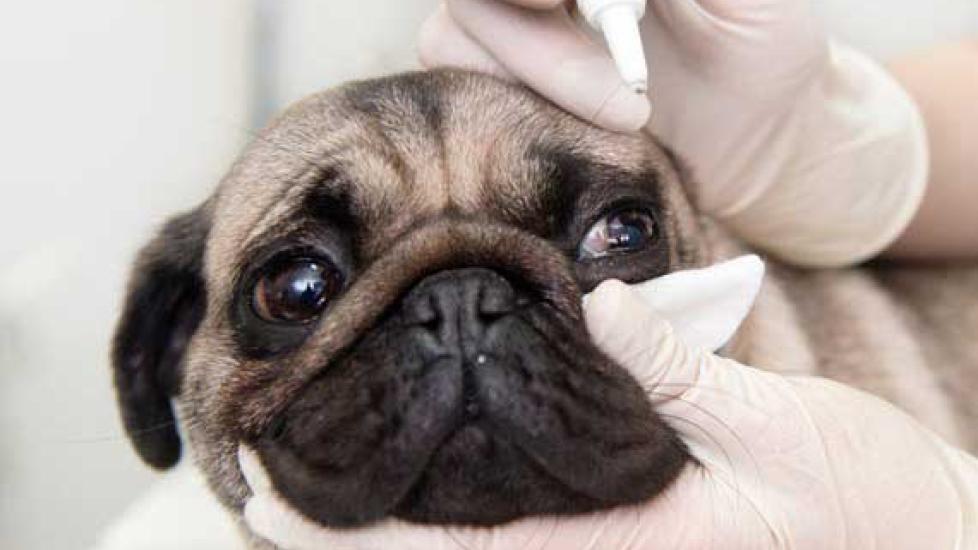5 Best Treatments For Your Pet's Allergies
Now that you are aware of the clinical signs of allergies in pets, here are my top recommendations for alleviating your canine or feline companion’s symptoms.
- Take your pet to the vet — Since there are so many conditions that can appear clinically similar to allergies, having your veterinarian examine your pet is an important first step. Diagnostics, including skin impression smear and scraping, blood testing, and others may be needed to determine the nature of the condition and the most appropriate treatments.
- Bathing and topical treatments — Cleaning your pet’s skin surface and hair coat using a pet-appropriate shampoo helps remove environmental allergens, bacteria, oil, and other irritating substances. Full-body bathing or localized cleansing can be performed on a twice daily or daily basis depending on your pet’s needs. My general recommendation for pets suffering from environmental allergies is to be bathed on an every seven day or more frequent basis if needed. Besides shampooing, a leave-on-conditioner or veterinary-prescribed topical treatment can help to manage your pet’s general or localized skin irritation and infection.
- Eye rinses — Applying a few drops of eye irrigating solution, just like that which you would use in your own eyes and can purchase from a human pharmacy, is one of the simplest means of removing allergens from your pet’s eyes. Doing so every morning, afternoon, and evening for 24 to 48 hours can help lend perspective on whether your pet's problem is simply mild environmental inflammation or merits evaluation by your veterinarian. Eyedrops or eye ointment containing an antibiotic, steroid, or other drugs may be called for.
- Ear cleaning — Allergens, broken hairs, microorganisms (bacteria, yeast, mites, etc.), and other substances can all get stuck in your pet’s ear canals. Gently irrigating (flushing) the ear canals with a pet-appropriate ear cleaning solution removes these offensive materials and modifies the pH and microenvironment of the ear canal to deter microorganism growth. Additionally, plucking the hair from the ear canal and inner flap prevents accumulation of environmental allergens that can irritate the ear canal and promote the growth of microorganisms. If your pet is a swimmer, sprinkler-diver, or is frequently bathed, then irritating the ears post-watery activity can help ensure that moisture doesn’t linger in the canals.
- Dietary modification and nutraceuticals — Skin allergies can correlate with our environment and with food components (protein, carbohydrates, fat, etc.). Therefore, it is vital that owners consider changing their allergy-prone pet's diet as part of a food elimination trial. Novel proteins and carbohydrates (those your pet has not previously consumed) should be chosen and vigilance must be employed to prevent your cat or dog from consuming other food sources (non-approved human foods and pet treats, etc.) that could negatively impact the trial by causing an allergic flare up. Truly, it’s so important to not cheat on your pet’s food elimination trial. Additionally, I suggest diets that are human-grade and whole-food, as feed-grade ingredients in kibble or canned pet foods can potentially contain undesirable contaminants that could sicken your pet on a short- or long-term basis, or further contribute to allergies. Nutraceuticals like fish oil derived Omega-3 fatty acids have a natural anti-inflammatory effect and promote healthy lipid layers in the skin to permit the body’s defenses toward microorganisms and allergens.
As there are so many connections between allergens and the variety of clinical signs our pets may exhibit, it’s important that owners recognize the signs and work with their veterinarians to help ensure that minimal discomfort is experienced and the most rapid resolution is achieved.
Does your pet suffer from seasonal or non-seasonal allergies? If so, what kind and how do you manage the multi-faceted issues?

Dr. Patrick Mahaney
Image: Ermolaev Alexander / Shutterstock
Last reviewed on August 5 ,2015
Related
Top Five Signs Your Pet Has Seasonal Allergies
Are You Poisoning Your Companion Animal by Feeding 'Feed-Grade' Foods?
